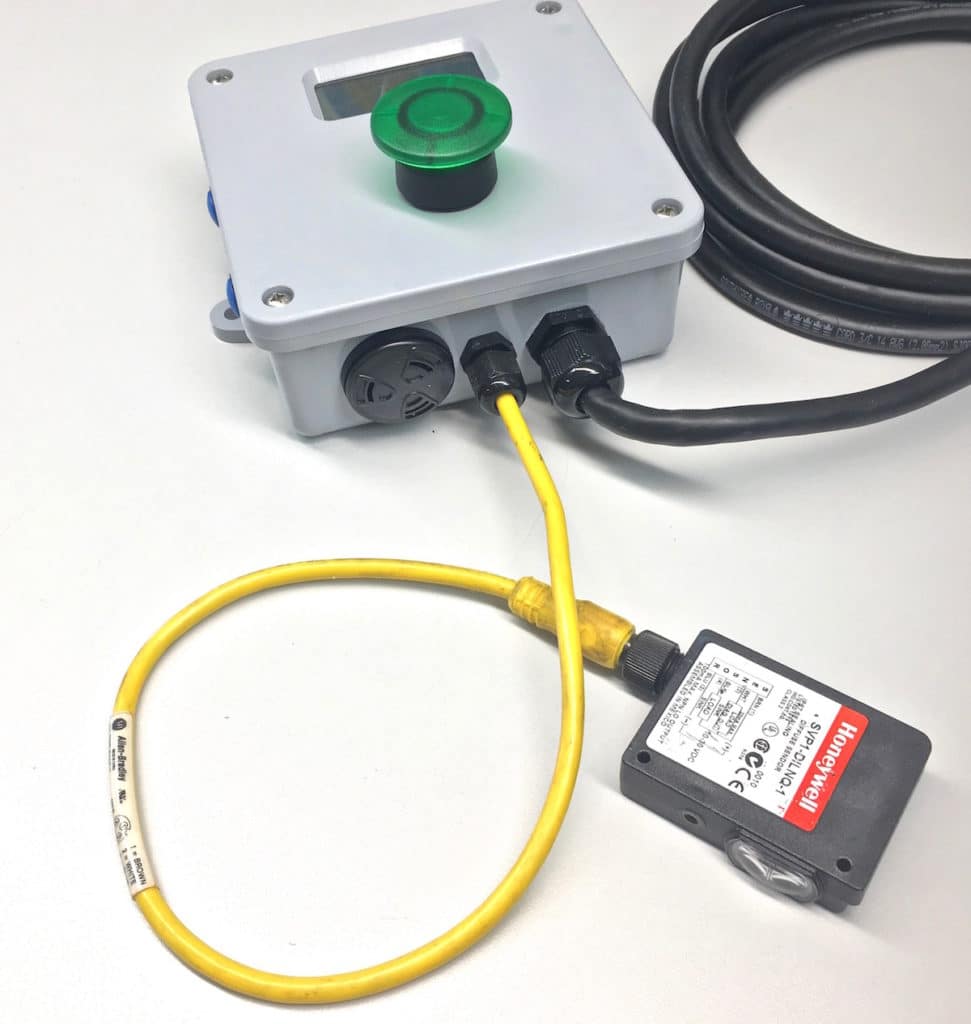We were asked by a branch of Federal Express if we could integrate a photoelectric sensor with our timers. After some bench testing, the photo-electric sensor was a drop-in alternative to our inductive proximity sensors that we stock. In fact we can use any type of sensor with an NPN otuput.
WHICH TYPE OF SENSOR?
We favor inductive proximity sensors for plating operations because they are very rugged,and immune to any amount of dirt buildup on the sensor so they are maintenance-free. They have a durable nickel-plated brass body they should last for decades. They are also highly accurate although this is not required for sensing plating racks in tanks. The downside of inductive proximity sensors is that they can only sense metal, and they have a limited sensing range – the Omron sensors we use have a range of 30 mm for mild steel which is considered a “long range” for this class of sensors. Furthermore, the range is reduced for metals don’t absorb as much of the induced magnetic field like titanium, brass, and copper, which has a sensing range of 20 mm. Manufacturers keep improving the range however and I recently became aware of one with a 40 mm maximum sensing range.
PHOTOELECTRIC
The advantage of photoelectic sensors is the long sensing range. Its not uncommon for them to have a sensing range of several feet away. However anything that obstructs the light beam will compromise the reliability of the sensing. Of course dirt on the sensor lens will cause failure. In addition, the distance-settable types can have a focal point and only sense within a predetermined range. more about photoelectric sensors.
ULATRASONIC
The advantage of ultrasonic sensors is that they can sense long distances – up to 40 feet. Since they use reflected sound waves they can sense through obstructions like mists and foams. In our testing we have not found them to be reliable for sensing foam on the surface of liquids. (if the foam has a structure to it then the sound waves can be reflected at an angle so it is not returned to the sensor. Considering that they are also expensive, require a computer connection to calibrate, and they must have a considerable “dead zone” in front of the sensor in which it is blind. So although there are plenty of these used in industry, they don’t meet our criteria of “simple, reliable” and therefore we don’t recommend ultrasonics.
CAPACITIVE
The advantages of capacitive sensors is that they can sense any material, and they are low cost. They can tolerate up to 2 mm of dirt buildup on the surface of the sensor. We have used them for certain applications and they work well.

